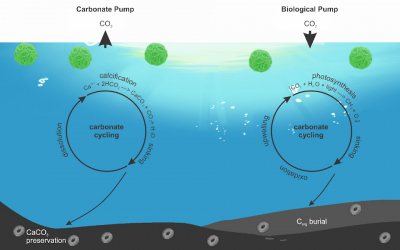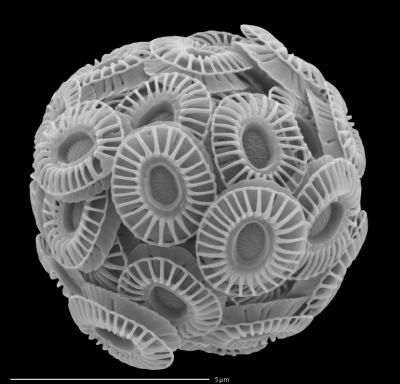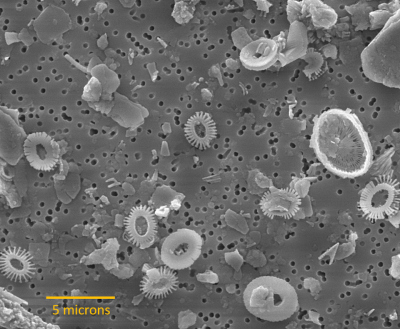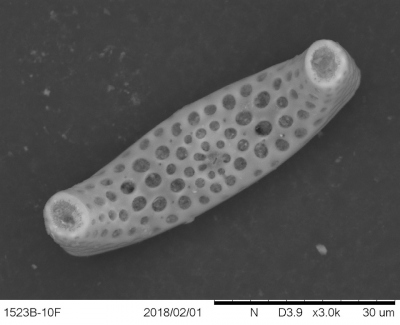- Home
- Discover
- Archive News
- News 2021
- Phytoplankton
Phytoplankton contributes to CO2 reduction
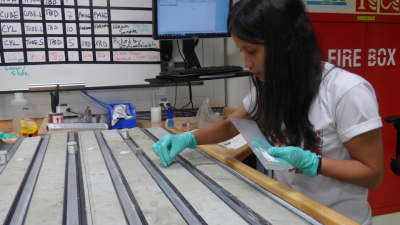
Coccolithophores, a group of unicellular microscopic phytoplankton, are unique among other marine organisms because of their double role in the exchange of carbon dioxide between the atmosphere and the ocean. Huge amounts of carbon dioxide is sequestered from the atmosphere during photosynthesis as these organisms get their food and energy from the sun. On the other hand, the coccolithophore cell is surrounded by shells, called coccoliths that are made up of calcium carbonate. During the production of these shells, coccolithophores release carbon dioxide back into the atmosphere. When the organism dies, the shells fall to the ocean floor and are preserved there as fossils. The fossils then give us information on what the ocean and climate conditions were when these organisms are still living in the surface waters.
The Agulhas Plateau in the Southern Ocean sector of the Indian Ocean, which is the location of the sediment cores is well-situated to provide important information about linkages of different factors of the climate system. In the study, the researchers identified a strong glacial-interglacial variability in sea surface temperature and productivity associated with subtropical front migration, as well as shorter-term high frequency variability aligned with variations in high latitude insolation. Alkenone and coccolithophore abundances, in combination with diatom and organic carbon records indicate high glacial export productivity, which led the authors to conclude that the biological pump was more efficient and strengthened during glacial periods. This could partly account for the reported reduction in atmospheric carbon dioxide concentrations shown in previous studies.
Together with Deborah Tangunan are Dr. Oscar Romero and Dr. Karl-Heinz Baumann, scientists at the MARUM and Paleoceanography-Sedimentology Research Group of the Department of Geosciences, University of Bremen, respectively. This work is partly supported by the German Science Foundation (DFG) Research Center/Cluster of Excellence ‘The Ocean in the Earth System' (MARUM) and the open access publication was made possible by Germany’s Projekt DEAL.
Deborah Tangunan's work on coccolithophorids complements earlier research by Oscar Romero.
Contakt:
Dr. Deborah Tangunan
Email: [Bitte aktivieren Sie Javascript]
Dr. Oscar Romero
Phone: +49 421-21865645
Email: [Bitte aktivieren Sie Javascript]
Deborah Tangunan, Melissa A. Berke, Alejandra Cartagena-Sierra, José Abel Flores, Jens Gruetzner, Francisco Jiménez-Espejo, Leah J. LeVay, Karl-Heinz Baumann, Oscar Romero, Mariem Saavedra-Pellitero, Jason J. Coenen, Aidan Starr, Sidney R. Hemming, Ian R. Hall & Expedition 361 Science Party: Strong glacial-interglacial variability in upper ocean hydrodynamics, biogeochemistry, and productivity in the southern Indian Ocean. Nature Earth & Environment. DOI: https://doi.org/10.1038/s43247-021-00148-0
More Information:
IODP expedition 361 by Bremen's partner university Cardiff



